In the realm of stock market analysis, the On-Balance Volume (OBV) indicator stands as a venerable tool for traders seeking to decipher market trends. As investors navigate the complexities of market fluctuations, understanding the nuances of OBV indicator techniques becomes paramount for informed decision-making.
With a myriad of strategies at hand, each tailored to leverage volume dynamics, the quest for identifying the top 10 OBV indicator techniques for stock predictions unveils a treasure trove of possibilities. From trend analysis to breakout techniques, the realm of OBV strategies beckons, promising a deeper insight into the art of stock prediction.
OBV Indicator Basics
The foundation of understanding the OBV Indicator lies in grasping its fundamental principles that intertwine price movements and volume dynamics to gauge market trends and potential price shifts with a data-driven approach. Developed by Joseph Granville in 1963, the OBV indicator serves as a crucial tool for traders in predicting stock price changes by analyzing volume flow.
By combining volume and price movement, OBV offers insights into market trends and helps identify buying or selling pressure. This indicator calculates cumulative volume flow in relation to price movements, allowing traders to anticipate bullish or bearish outcomes.
Traders rely on OBV to make informed decisions based on volume dynamics and market trends. The interplay between trading volume and price changes is at the core of OBV analysis, providing a quantitative basis for understanding market sentiment and potential shifts in stock prices. Mastering the basics of the OBV indicator is essential for traders seeking to leverage volume data effectively in their trading strategies.
OBV Trend Analysis
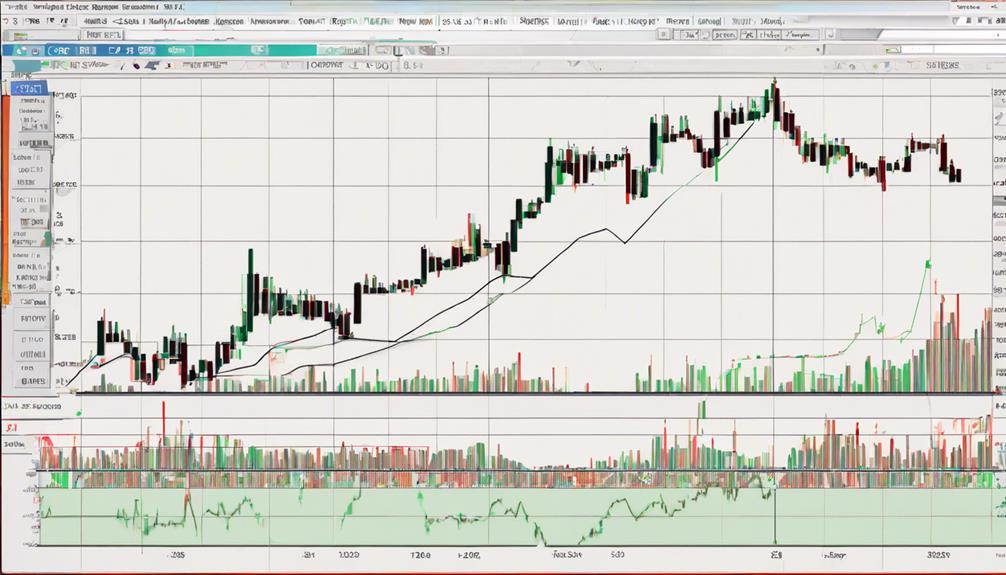
Analyzing OBV trends involves crucial aspects like trend identification and volume confirmation techniques.
Understanding the direction of OBV values provides insights into market sentiment and potential price movements.
OBV Trend Identification
In determining market sentiment and potential price movements, OBV Trend Identification involves analyzing the direction of the OBV line.
- A rising OBV line indicates buying pressure and suggests a bullish trend in the market.
- Conversely, a falling OBV line signifies selling pressure and indicates a bearish trend in the market.
OBV Trend Analysis helps traders anticipate trend reversals and make informed decisions based on volume flow dynamics.
Understanding OBV trends is crucial for identifying market momentum and confirming price trend directions accurately.
Volume Confirmation Techniques
Utilizing volume confirmation techniques, traders can effectively validate price trends through OBV Trend Analysis. By comparing volume flow with price movements, OBV trend analysis offers insights into the strength of market momentum. This analysis enables traders to anticipate potential price reversals or continuations, enhancing their decision-making process by aligning volume dynamics with price action.
Understanding the OBV trend confirmation is crucial for accurately predicting stock price movements using volume confirmation techniques. By incorporating OBV trend analysis into their trading strategies, investors can gain a comprehensive understanding of market sentiment and momentum, leading to more informed and data-driven trading decisions. This approach provides a structured method for assessing the relationship between volume and price, ultimately improving forecasting accuracy and trading outcomes.
OBV Divergence Strategy
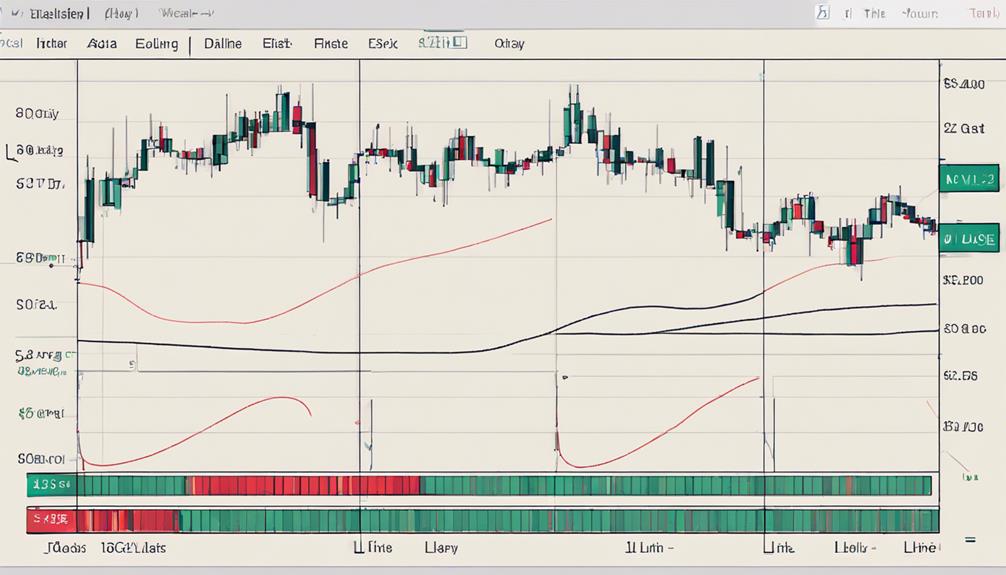
The OBV Divergence Strategy is a key method used by traders to identify potential trend reversals by analyzing the relationship between OBV movements and price trends.
By pinpointing divergences where OBV trends diverge from price movements, traders can anticipate possible buying or selling opportunities.
This strategy helps traders navigate market dynamics more effectively by incorporating volume analysis into their decision-making process.
OBV Divergence Explained
Analyzing OBV Divergence patterns provides traders with a strategic advantage in predicting market sentiment shifts and potential trend reversals. Here are key points to understand OBV Divergence:
- Bullish Divergence: When the OBV indicator is trending upwards while prices are trending downwards, it suggests a potential bullish reversal.
- Bearish Divergence: Conversely, bearish divergence occurs when prices are increasing, but the OBV indicator is decreasing, indicating a possible bearish trend reversal.
- OBV Divergence Signaling Reversals: This discrepancy between OBV and price movements serves as an early warning sign for potential trend changes.
- Powerful Predictive Tool: OBV Divergence is a robust tool for traders to anticipate market sentiment shifts and make informed trading decisions.
Identifying OBV Divergence
With a focus on practical application and strategic insight, mastering the identification of OBV Divergence is crucial for traders seeking to leverage this powerful predictive tool in their stock predictions.
OBV Divergence occurs when the On-Balance Volume (OBV) line moves counter to the price direction, hinting at a potential trend reversal. Traders utilize OBV Divergence to anticipate price changes before they occur, offering early signals for entry and exit points.
Bullish OBV Divergence manifests when the price forms a lower low while the OBV creates a higher low, indicating increased buying pressure. Conversely, Bearish OBV Divergence emerges when the price achieves a higher high, but the OBV registers a lower high, highlighting heightened selling pressure.
Monitoring OBV Divergence assists traders in confirming trends, spotting possible reversals, and refining their trading strategies.
Trading With OBV Divergence
How can traders effectively leverage OBV Divergence as a strategic tool for making informed stock predictions based on volume dynamics? Traders can capitalize on OBV Divergence to anticipate potential trend shifts by analyzing volume flow dynamics. Here are four key strategies for trading with OBV Divergence:
- Identifying Reversal Signals: Recognize OBV Divergence as a signal of possible price reversals.
- Confirming Buying Pressure: Bullish OBV Divergence, where OBV rises as prices fall, indicates increasing buying pressure.
- Spotting Selling Pressure: Bearish OBV Divergence, characterized by OBV decreasing as prices rise, signifies growing selling pressure.
- Informing Trend Shifts: Monitoring OBV Divergence helps traders make informed decisions about potential trend changes.
OBV Breakout Techniques
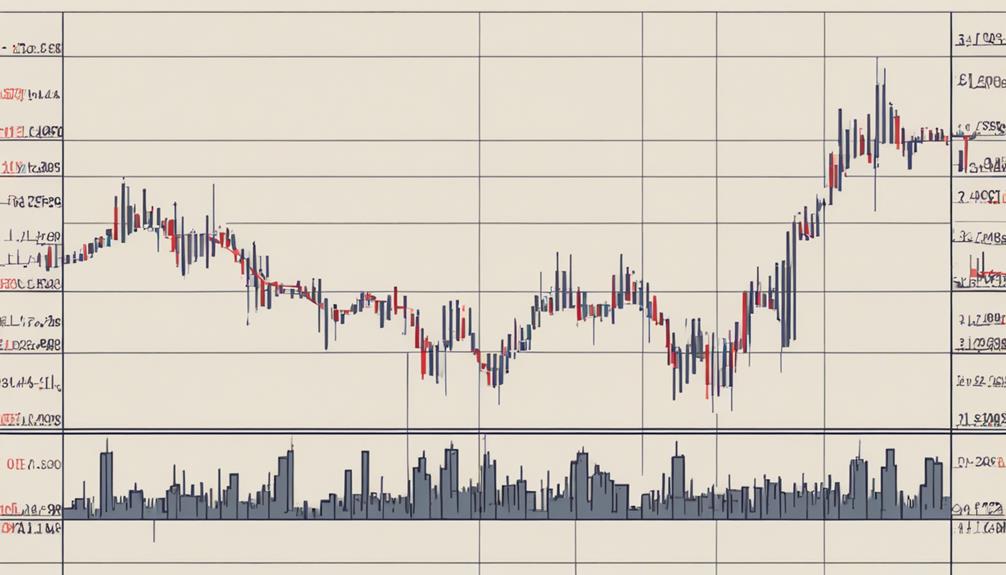
Traders seeking to validate bullish trends and identify potential buying opportunities often turn to OBV breakout techniques in stock market analysis. These techniques involve identifying significant volume increases that confirm price breakouts.
OBV breakout signals, which precede significant price movements, offer traders early entry points into trades. By confirming OBV breakouts, traders can filter out false signals and make more informed trading decisions.
The incorporation of OBV breakout techniques with other technical indicators can enhance trading strategies and improve risk management. This combination allows traders to gain a more comprehensive understanding of market dynamics and increases the likelihood of successful trades.
Utilizing OBV breakout signals in volume trading can provide valuable insights into market trends and help traders capitalize on emerging opportunities effectively. Overall, incorporating OBV breakout techniques into trading strategies can lead to more profitable outcomes and better risk-adjusted returns in the stock market.
OBV Confirmation Signals
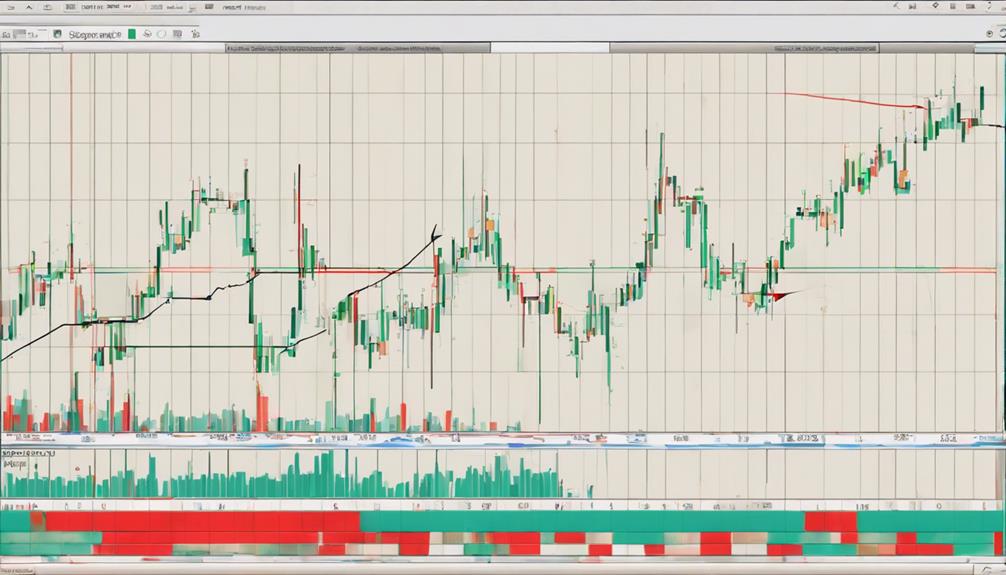
Does the alignment of the OBV line with the price trend signal strong market conviction in OBV Confirmation Signals analysis? When analyzing OBV confirmation signals, traders look for this alignment to validate their market convictions. Here are four key points to consider:
- Bullish/Bearish Signals: OBV confirmation signals can indicate whether market sentiment is bullish or bearish based on the alignment of the OBV line with the price trend.
- Trend Strength Validation: These signals provide validation for the strength of a trend, giving traders confidence in the potential continuation of price movements in the same direction.
- Enhanced Trading Decisions: Aligning OBV confirmation signals with other technical indicators can enhance trading decisions by providing additional confirmation of market trends.
- Filtering False Signals: Traders use OBV confirmation signals to filter out false signals and focus on high-probability trade setups, improving the accuracy of their analysis and decision-making processes.
OBV Intraday Trading Tips
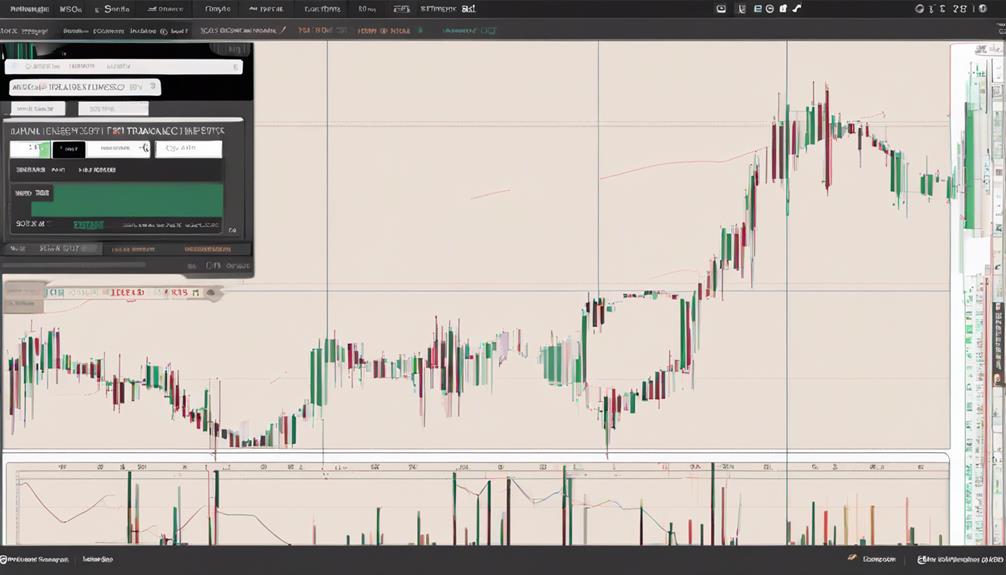
Intraday trading with OBV involves leveraging volume trends within a single trading day for making swift and informed short-term trading decisions. Traders utilize OBV on intraday charts, such as M5 or M30, to gauge buying or selling pressure throughout the day.
By analyzing OBV in intraday trading, traders can confirm trends, establish stop-loss levels, and pinpoint profit targets for quick trades. Notably, spotting unusual divergences on OBV during intraday trading can serve as a warning sign for potential price reversals or changes in trends.
To enhance intraday trading strategies, traders often combine OBV with other indicators like moving averages to improve entry points and manage risks effectively. Overall, incorporating OBV into intraday trading provides valuable insights into volume dynamics that can aid traders in making well-informed and timely decisions, ultimately optimizing their short-term trading outcomes.
OBV Swing Trading Strategies
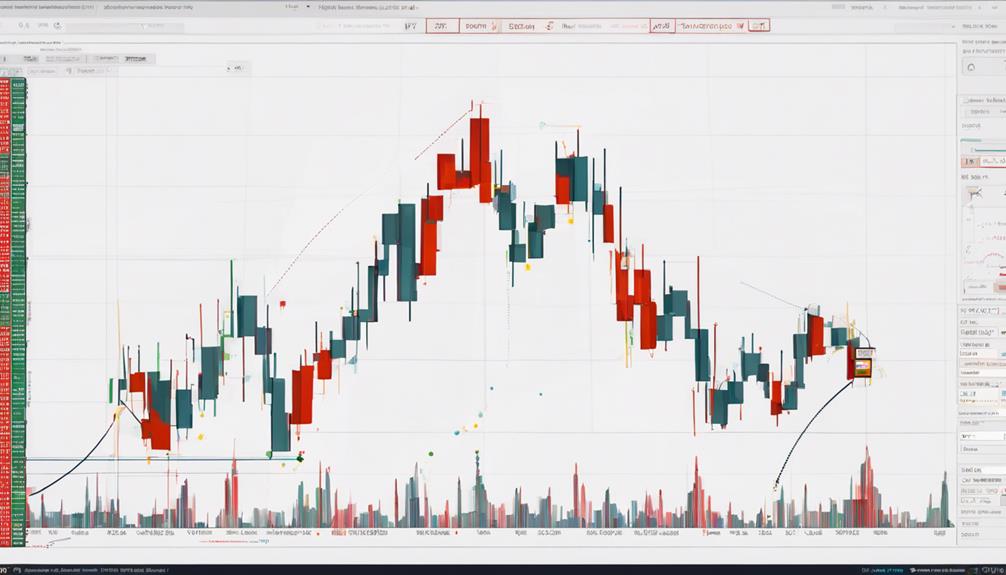
OBV Swing Trading Strategies revolve around pinpointing optimal entry and exit points.
Interpreting volume signals to validate trading decisions is another key aspect of these strategies.
Employing effective risk management tactics within the trading framework is crucial for success.
These strategies enable traders to leverage short-term market dynamics, identify trend reversals, and enhance decision-making accuracy by integrating OBV with other technical indicators.
Entry and Exit Points
Utilizing OBV swing trading strategies involves strategically leveraging the indicator to pinpoint optimal entry and exit points in the stock market.
- Identifying Entry Points: OBV can signal potential entry points when it diverges from price trends, indicating a possible reversal.
- Spotting Exit Signals: Traders use OBV to confirm price movements; divergences between OBV and price can suggest an upcoming trend change.
- Confirming Price Reversals: Increased OBV accompanying price reversals can validate the likelihood of a trend shift.
- Timing Trades: Effective OBV swing trading strategies involve aligning OBV signals with price action to execute trades with precision timing.
Volume Confirmation Signals
Analyzing volume confirmation signals in OBV swing trading strategies provides valuable insights into stock price movements with a focus on assessing buying and selling pressure dynamics.
In OBV swing trading, understanding the interplay between buying pressure and selling pressure is crucial for making informed decisions. By tracking volume trends, traders can identify potential entry and exit points based on shifts in buying and selling pressure.
These signals help confirm the strength of a trend or signal possible reversals, aiding in maximizing profits and minimizing losses. Incorporating volume confirmation signals into OBV swing trading techniques enhances the precision of predicting stock movements, making it a valuable tool for traders engaged in swing trading strategies.
Risk Management Techniques
Effective risk management is paramount in OBV swing trading strategies, requiring precise implementation of stop-loss orders and profit targets to optimize trading outcomes. When employing OBV signals for stock predictions, it is crucial to incorporate risk management techniques to safeguard investments.
Here are four essential risk management techniques for OBV swing trading strategies:
- Utilize stop-loss orders: Set predetermined exit points to limit potential losses.
- Establish profit targets: Define specific levels to secure profits and prevent greed-driven decisions.
- Monitor volume and price trends: Stay vigilant for inconsistencies that may indicate a need for portfolio adjustments.
- Adjust risk exposure: Use OBV to anticipate momentum shifts and adapt risk levels accordingly.
OBV Support and Resistance
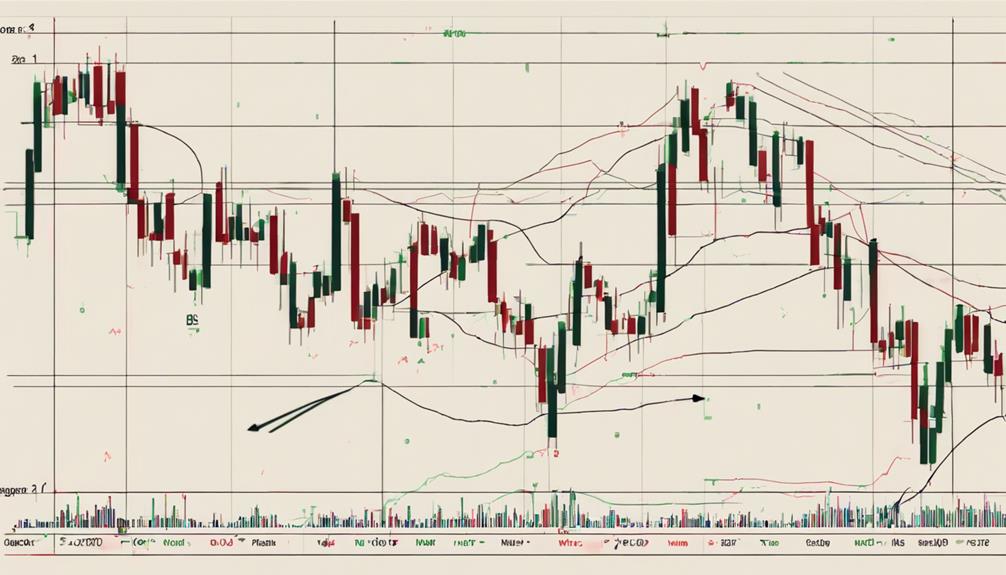
The identification of OBV support and resistance levels plays a crucial role in interpreting market dynamics and anticipating potential price movements. Support levels are recognized when OBV shows an increase in volume during price pullbacks, indicating buying interest.
On the other hand, resistance levels are identified when OBV fails to confirm price breakouts with volume, signaling selling pressure. Understanding these OBV levels enables traders to establish effective stop-loss and profit targets, contributing to informed decision-making.
Additionally, OBV support and resistance levels serve as valuable indicators of market sentiment, providing insights into potential price reversals. By monitoring OBV for support and resistance dynamics, traders can gain a deeper understanding of the underlying market forces at play and make more strategic trading decisions based on this technical analysis.
OBV Risk Management Approaches
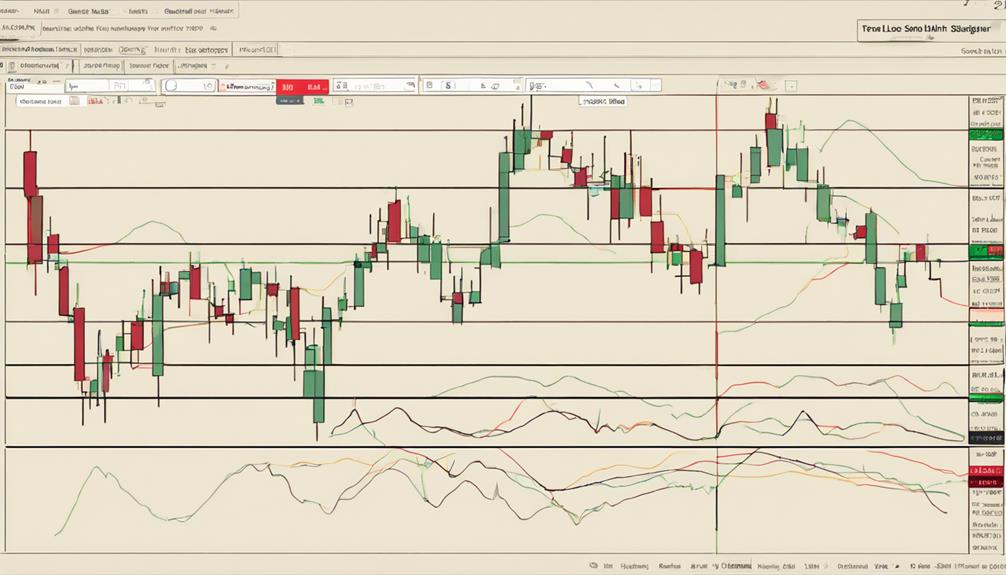
Given the importance of identifying OBV support and resistance levels in interpreting market dynamics, the application of OBV risk management approaches becomes crucial for traders seeking to mitigate potential losses and optimize profit potential. When incorporating OBV into trading strategies, it is essential to implement specific risk management techniques to enhance decision-making processes and overall portfolio performance:
- Implement Stop-Loss Orders: Utilize stop-loss orders to establish predetermined exit points, protecting against significant losses in case of adverse price movements.
- Set Profit Targets: Define profit targets based on OBV signals to secure gains and capitalize on favorable market conditions effectively.
- Monitor Volume Inconsistencies: Stay vigilant for discrepancies between volume trends and price movements, which could indicate potential reversals in trading strategies.
- Beware of False Signals: Exercise caution during market consolidation or erratic movements, as OBV may generate false signals that could lead to trading losses.
Integrating these risk management approaches into a comprehensive trading plan can help traders navigate the complexities of the market while leveraging the insights provided by the OBV indicator effectively. Understanding the limitations of OBV and being mindful of potential false signals are crucial aspects of managing risks and making informed trading decisions.
Advanced OBV Prediction Methods
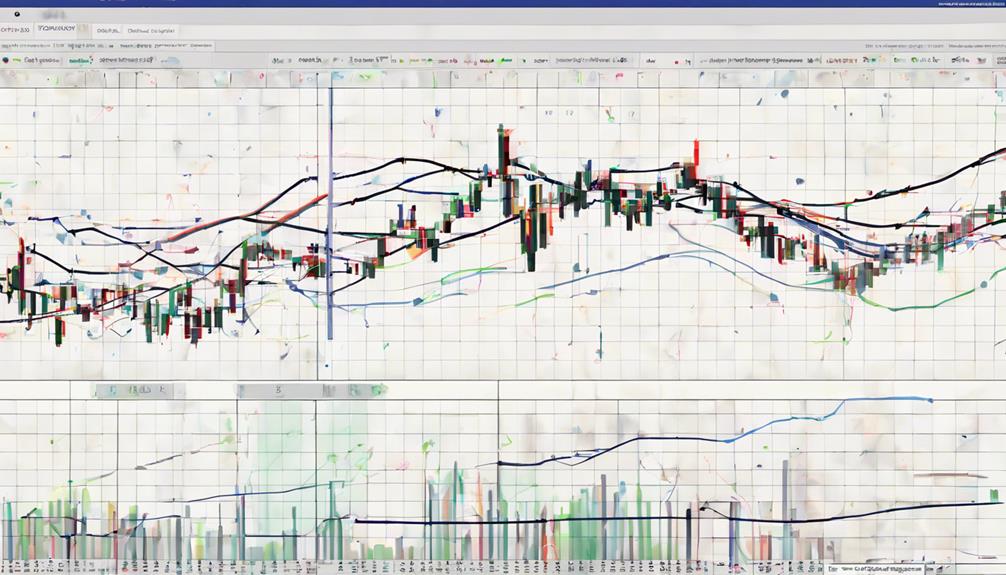
Advanced OBV prediction methods leverage intricate analysis of OBV patterns such as breakouts and breakdowns to enhance the accuracy of trend forecasts. By scrutinizing OBV patterns, traders can identify key turning points in price movements, providing valuable insights into potential market trends.
Comparing OBV trends across different securities allows traders to validate the strength of signals, increasing the confidence in decision-making. Moreover, integrating momentum oscillators with OBV can further refine predictions by confirming potential trend reversals or continuations based on momentum strength.
For instance, an OBV breakout signifies significant buying pressure and hints at a potential uptrend continuation, making it a crucial signal for traders to consider. However, understanding the risks and limitations of OBV is essential for effective utilization in trading strategies.
– How Effective are the OBV Indicator Techniques for Stock Predictions?
The OBV indicator stock market technique is quite effective for stock predictions. By analyzing volume flow, it can provide insights into how price movements may unfold. Traders use OBV indicator stock market techniques to confirm trends and identify potential trend reversals, making it a valuable tool for decision-making.
Frequently Asked Questions
What Is the Best Time Frame for OBV Indicator?
The best time frame for the OBV indicator depends on the trader's objectives and preferences. Daily charts suit longer-term trend analysis, while intraday traders may opt for shorter time frames like 15-minute or 1-hour charts for capturing short-term price movements.
How Accurate Is OBV Indicator?
The OBV indicator is highly accurate in predicting stock price changes, leveraging volume flow data. Its cumulative values offer a comprehensive view of market dynamics. Traders often monitor institutional investors through OBV to gauge market sentiment effectively.
Which Indicator Has Highest Accuracy in Stock Market?
The Relative Strength Index (RSI) is recognized for its high accuracy in stock market analysis. Its ability to identify overbought and oversold conditions offers valuable insights into potential price reversals, making it a popular choice among traders.
Which Is the Most Successful Stock Indicator?
The most successful stock indicator is one that accurately predicts price changes based on market sentiment and volume flow. Traders rely on indicators like OBV to confirm trends, spot reversals, and make informed decisions, highlighting its effectiveness in stock analysis.
Conclusion
In conclusion, mastering the On-Balance Volume (OBV) indicator techniques is essential for accurate stock predictions. By utilizing OBV trend analysis, divergence strategies, breakout techniques, confirmation signals, swing trading strategies, support and resistance levels, risk management approaches, and advanced prediction methods, traders can enhance their market analysis and make informed decisions.
Understanding the significance of trading volume and market dynamics is crucial for predicting major market moves and maximizing trading success.
